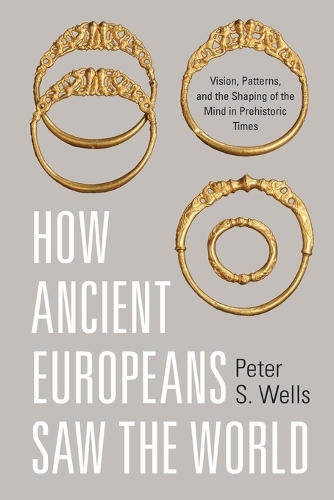
How Ancient Europeans Saw the World: Vision, Patterns, and the Shaping of the Mind in Prehistoric Times
(Paperback)
Available Formats
Publishing Details
How Ancient Europeans Saw the World: Vision, Patterns, and the Shaping of the Mind in Prehistoric Times
By (Author) Peter S. Wells
Princeton University Press
Princeton University Press
1st September 2015
United States
Classifications
Tertiary Education
Non Fiction
936
Commended for PROSE Awards: Archeology & Anthropology 2012
Physical Properties
Paperback
304
Width 152mm, Height 235mm
454g
Description
The peoples who inhabited Europe during the two millennia before the Roman conquests had established urban centers, large-scale production of goods such as pottery and iron tools, a money economy, and elaborate rituals and ceremonies. Yet as Peter Wells argues here, the visual world of these late prehistoric communities was profoundly different fro
Reviews
Honorable Mention for the 2012 PROSE Award in Archeology & Anthropology, Association of American Publishers "[B]eautifully crisp and elegant... [Wells's] book deserves to be widely read and admired."--Peter Thonemann, Times Literary Supplement "With painstaking detail, Wells documents how objects tell the early European story, making a compelling case that historians ought to rethink the standard views."--Tom Siegfried, Science News "Archaeologist Wells takes a novel approach to exploring the way Bronze and Iron Age societies in Europe (2000BCE to 1CE) viewed themselves. Through analysing their artifacts, pottery, fibulae, swords and scabbards, and coins, as well as the arrangements of their graves and their public places, the author plausibly suggests that their views changed through time."--Choice "It is evident that Wells is constantly conscious of the fact that he is writing for a modem 'literate' person to who words are more important than visuals. He has explained every single object, without going on jargons. An interesting history of Europe."--R. Balashankar, Organiser "How Ancient Europeans Saw the World offers a completely new approach to the study of Bronze Age and Iron Age Europe, and represents a major challenge to existing views about prehistoric cultures."--World Book Industry "Wells presents thought-provoking ideas about Bronze Age and Iron Age Europeans. This book will stimulate further research on a very challenging topic, that is, the mindset of past populations. The extensive bibliography is very useful for archaeologists interested in this type of research."--Sarunas Milisauskas, Historian "This book is thought-provoking; its broad geographical scope is particularly relevant in this post-credit-crunch world where European integration is once more on the agenda."--Laura Slack, Time & Mind
Author Bio
Peter S. Wells is professor of anthropology at the University of Minnesota. His many books include Barbarians to Angels: The Dark Ages Reconsidered and The Barbarians Speak: How the Conquered Peoples Shaped Roman Europe (Princeton).
